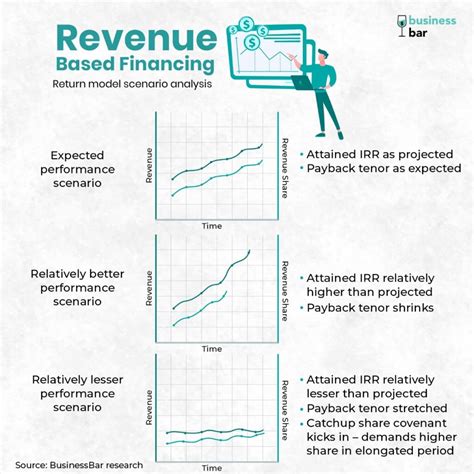Berikut adalah posting blog tentang pendanaan berbasis pendapatan untuk startup:
Revenue-Based Financing for Startups: A Complete Guide
Revenue-based financing (RBF) is a rapidly growing alternative to traditional funding for startups. Unlike equity financing, which requires you to give up a piece of your company, RBF allows you to receive funding in exchange for a percentage of your future revenue. This can be a game-changer for businesses that need capital but don't want to dilute their ownership. This guide will walk you through everything you need to know about revenue-based financing for startups.
What is Revenue-Based Financing?
Revenue-based financing (RBF) is a type of funding where investors provide capital to a startup in exchange for a share of the company's future revenue. This is different from loans, which require repayment of principal and interest, and equity financing, which requires giving up ownership. With RBF, you retain full control of your business while still securing the funds needed for growth. The repayment is directly tied to your revenue, making it a less risky option for both the startup and the investor.
Key Features of Revenue-Based Financing:
- No Equity Dilution: You maintain full ownership of your company.
- Flexible Repayment: Repayments are typically tied to a percentage of your monthly or annual revenue, making it easier to manage cash flow.
- Faster Funding: The application and approval process is often faster compared to traditional funding methods.
- Focus on Revenue: Investors are primarily interested in your revenue generation potential.
- Lower Risk for Startups: Repayment is tied to your actual revenue, so there's less pressure if you experience temporary setbacks.
How Does Revenue-Based Financing Work?
The process of securing revenue-based financing typically involves these steps:
- Find an Investor: Research and identify RBF providers who align with your business and funding needs.
- Submit an Application: Provide financial statements, business plans, and other relevant information to the investor.
- Negotiate Terms: Agree on the amount of funding, the percentage of revenue to be shared, and the repayment terms.
- Receive Funding: Once the agreement is finalized, you will receive the funding.
- Repay the Investment: Make regular payments based on your agreed-upon revenue share.
Advantages of Revenue-Based Financing for Startups:
- Preserves Equity: This is a major advantage for founders who want to maintain control and ownership of their company.
- Manageable Repayments: Repayments are directly linked to your revenue, making it easier to budget and manage cash flow.
- Faster Access to Capital: The application and approval process is usually faster than traditional loan applications.
- Focus on Growth: Investors are incentivized to see your business succeed, as their returns are directly tied to your revenue.
- Ideal for B2B SaaS Companies: The predictable revenue streams of many SaaS businesses make them ideal candidates for RBF.
Disadvantages of Revenue-Based Financing for Startups:
- Higher Interest Rates: RBF often comes with higher interest rates compared to traditional loans.
- Revenue Share: You'll need to share a portion of your revenue with the investor, impacting your profitability.
- Limited Funding Amounts: The amount of funding available through RBF might be lower than other financing options.
- Potential for Dilution (Indirect): While equity isn't directly diluted, high revenue shares might limit future funding options.
- Strict Reporting Requirements: You'll be required to provide regular financial reports to the investor.
Is Revenue-Based Financing Right for Your Startup?
Revenue-based financing can be a powerful tool for startups, but it's crucial to carefully weigh the pros and cons. It's best suited for businesses with:
- Recurring Revenue: Predictable revenue streams are essential for successful RBF repayment.
- Strong Growth Potential: Investors will want to see a clear path to significant revenue growth.
- Healthy Financial Metrics: Solid financial performance demonstrates the ability to repay the investment.
Before committing to RBF, compare it to other financing options like angel investors, venture capital, or bank loans. Consult with financial advisors and carefully review the terms of any potential agreement.
Conclusion:
Revenue-based financing represents a compelling alternative to traditional funding for startups, particularly those seeking to retain full ownership while accelerating growth. By understanding the mechanics, advantages, and disadvantages of RBF, entrepreneurs can make informed decisions about whether this funding model is the right fit for their unique circumstances. Remember to thoroughly research potential investors and negotiate favorable terms to maximize the benefits of this innovative financing approach.
